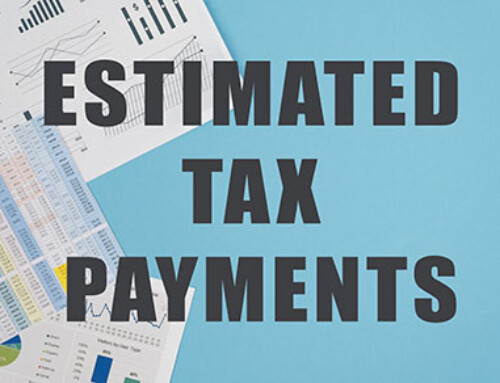For charitable donors, the Tax Cuts and Jobs Act (TCJA) provided some tax breaks and took away others. Here’s what charity-minded individuals need to know.
Increased Charitable Deduction Limit
Under prior law, deductions for cash contributions to public charities and certain private foundations were limited to 50% of your adjusted gross income (AGI). The TCJA, which passed in December of 2017, increased the deductible limit to 60% of AGI for the 2018-2025 tax years. Deductions that are disallowed by the 60%-of-AGI rule can generally be carried forward for five years.
Effect of Bigger Standard Deductions
For less-ambitious givers, charitable deductions may now be somewhat harder to come by. That’s because to deliver any tax-saving benefit, your itemized deductions, including charitable donations, must exceed the applicable standard deduction. The TCJA significantly increases the standard deduction amounts. For 2019, it is $24,400 for married joint-filing couples ($18,350 for heads of households and $12,200 for others). You can only deduct charitable gifts if you itemize deductions on your tax return.
Charitable Donations from IRAs
If you reach age 70½ and have more money than you really need, you can make cash donations to IRS-approved charities out of your Individual Retirement Account (IRA). To take maximum advantage of these qualified charitable distributions (QCDs), replace some or all your IRA required minimum distributions (RMDs) with tax-smart QCDs. However, there are some rules you must follow.
Qualified Charitable Distribution Basics
QCDs can be taken out of your traditional IRAs free of any federal income tax bill. In contrast, other traditional IRA distributions are taxable (wholly or partially depending on whether you’ve made any nondeductible contributions over the years).
Unlike garden-variety charitable donations, you can’t claim itemized deductions for QCDs. But that’s OK. The tax-free treatment of QCDs equates to a 100% deduction — because you’ll never be taxed on those amounts, and you don’t have to worry about any of the tax-law restrictions that apply to itemized charitable write-offs.
A QCD must meet all the following requirements:
- It must be distributed from an IRA, and it cannot occur before you, as the IRA owner or beneficiary, reach age 70½.
- It must meet the normal tax-law requirements for a 100% deductible charitable donation. If you receive any benefits that would be subtracted from a donation under the normal charitable deduction rules, (such as free tickets to an event), the distribution cannot be a QCD. Beware of this rule!
- It must be a distribution that would otherwise be taxable. A Roth IRA distribution can meet this requirement if it’s not qualified (tax-free). However, making QCDs out of Roth IRAs is generally inadvisable for reasons explained below.
Key Point: If you inherited an IRA from the original account owner, you can also do the QCD drill with the inherited account if you’ve reached age 70½.
$100,000 Annual Limit
There’s a $100,000 limit on total QCDs for any one year. But if both you and your spouse both have IRAs set up in your respective names, each of you is entitled to a separate $100,000 annual QCD limit, for a combined $200,000 total.
Tax-Saving Advantages
QCDs have at least four potential tax-saving advantages:
- QCDs aren’t included in your adjusted gross income (AGI). This lowers the odds that you’ll be affected by various unfavorable AGI-based rules — such as those that can cause more of your Social Security benefits to be taxed, fewer of your rental estate losses to be deductible, and more of your investment income to be hit with the 3.8% net investment income tax. QCDs are also exempt from the rule that says your charitable write-offs can’t exceed 60% of your AGI for tax years 2018-2025.
- A QCD from a traditional IRA counts as a distribution for purposes of the RMD rules. Therefore, you can arrange to donate all or part of your RMD (up to the $100,000 limit) that you would otherwise be forced to receive before year end and pay taxes on.
- QCDs are treated as coming from the taxable layer of your IRA balance. Say, for example, that you own one or more traditional IRAs to which you have made nondeductible contributions over the years. Your IRA balances consist of a taxable layer (from deductible contributions and account earnings) and a nontaxable layer (from those nondeductible contributions). QCDs come from the first, taxable layer. Any nontaxable amounts are left in your IRA(s). Later, those nontaxable amounts can be withdrawn tax-free by you or your heirs.
- QCDs reduce your taxable estate, although that’s much less an issue for most folks right now because the TCJA drastically increased the federal estate tax exemption for tax years through 2025. The exemption for 2019 is a whopping $11.4 million ($22.8 million if you’re married).
Are You a Good QCD Candidate?
Individuals who can afford to donate IRA money can benefit tax-wise if they match one or more of the following profiles.
- You want to avoid being taxed on the required minimum distribution amount you must take from your IRA.
- You’re wealthy and looking for a quick and easy estate tax reduction strategy.
- You’re limited in making itemized charitable donations because of the increased standard deduction.
Should You Consider QCDs from a Roth IRA? Generally, the answer is no. Reason: You and your heirs can take federal-income-tax-free Roth IRA withdrawals after at least one Roth account owned by you has been open for at least five years. Also, for original account owners (not beneficiaries), Roth IRAs aren’t subject to the RMD rules until after your death.
Bottom line: Because the tax rules for Roth IRAs are so favorable, it’s generally best to leave Roth balances untouched rather than taking money out for QCDs.
Possible Opportunity
The TCJA altered the playing field for charitably minded individuals. In particular, the QCD privilege may now be a really tax-smart opportunity for well-off seniors with more IRA money than they need for retirement. Your tax advisor can help you plan ahead to get the most tax-saving bang for your charitable bucks.






